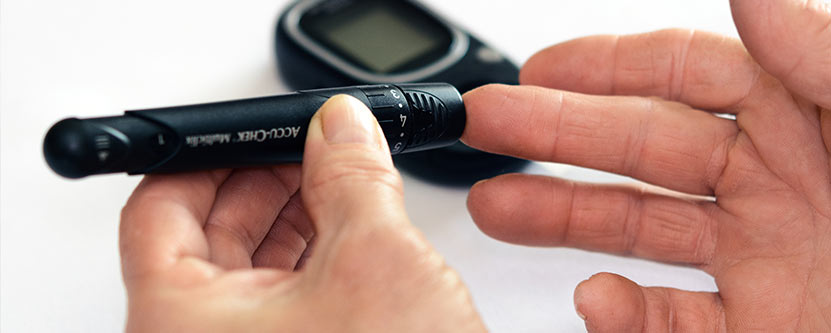We think it would be more sensible to talk about prediabetes rather than diabetes.
[the_ad id=”6214″]
The incidence of prediabetes worldwide, including India is rising at an alarming pace. So, what is Prediabetes? It is a very early stage of diabetes, in fact a preparatory stage, which if unchecked can progress to full-blown diabetes.
The good news is that it is reversible.
Prediabetes – The Basics
Most people who suffer from Prediabetes are completely in the dark. By the time they realize it, they probably have already been diagnosed with Diabetes. According to the Indiana State Department of Health, 15-30% of people with prediabetes will develop Type 2 diabetes in the next 5 years. Early detection, however, can not only reverse the tendency, but can also help you prevent it.
Here are some basic facts that you should know:
- Prediabetes is a condition where your blood glucose levels are higher than normal but not as high as a diabetes
- Before someone is diagnosed with type 2 diabetes, they almost always are prediabetic
- A regular blood test for diabetes will tell you if you are prediabetic or not
- If you are prediabetic, lifestyle changes including losing weight, healthy food habits and keeping physically fit can help you reverse the condition
- Prediabetes can lead to diabetes, but doesn’t have to. Research proves that the above mentioned measures can often stall, or at least slow down the progression of pre-diabetes, so that it doesn’t spiral
Risk Factors
When you are prediabetic your cells are essentially ignoring your insulin signals. This means that the cells are now resistant to insulin and have stopped responding to the message it is sending out – which is to absorb sugar from the bloodstream. While there are several unanswered questions about when exactly a prediabetic condition progresses to full blown diabetes, we do know about certain risk factors that expedite the transition.
- Weight: If you are overweight, or even on the heavier side, you need to be careful. Those especially heavier around the waist tend to be more at risk.
- Physical Activity: Related to the first point, people who are physically inactive tend to be overweight, and therefore more susceptible. But even in a more direct link, lack of physical activity leads to inflammation, which has always been a part of a prediabetic condition.
- Genes: In case of prediabetes and diabetes, your genes play a significant role. If a close family member has suffered from either or both, you are at a great risk of developing it.
- Age: After 45, the risk of prediabetes increases. After 65, it increases exponentially.
- Medical History: Your own medical history plays a big role here. If, for instance you have a history of high blood pressure, or high (or low) levels of LDL-cholesterol, or PCOS (polycystic ovary syndrome), or gestational diabetes, your risk increases.
One of the fundamental ways to avoid the condition is to go for routine blood tests and general health checks.
Controlling Prediabetes
Watch what you eat:
Prediabetes, it is believed, is associated with too many simple sugars in our diet. One of the best ways to rein it in is through switching to a diet that focuses on whole food, complex carbohydrates and high density nutrients (including proteins and healthy fats). An anti-inflammatory diet – as this is called – has been gaining popularity not just amongst nutritionists but also physicians across the world. Keep in mind a few simple rules and you’re all set –
- Choose whole foods (whole grains, fresh fruits and vegetables) over processed or canned food. Processed food tends to remove nutrients, add preservatives and sometimes a whole lot of sugar as well.
- Cook fresh food, and always cook from scratch
- Go for organic food as much as possible
- At least 90-95% of the carbohydrates you consume should be complex carbohydrates. Complex carbs are usually found in whole and unprocessed food like whole grains, lentils, beans, fruits and vegetables
- Avoid ‘white foods’ as much as you possibly can. These include white breads, white pasta, white rice. You should also be avoiding things like cakes, cookies, candies and any kinds of pastries
- Add lots of natural fiber to your diet. Something like flax seeds is a great source and could be had at every meal. You can add it to salads, soups or even your side dishes
- Much as you love your red meat, don’t eat too much of it. Switch to fish and poultry (without skin) instead. When it comes to fish, those like salmon, tuna and cod are great options. Rich in omega-3 fatty acids, these fight inflammation and are essential for good health
- When it comes to fruits and vegetables, the more the variety, the better it is
Exercise – you must!
If you are already into some form of regular physical activity, all you have to do is increase your levels a little. There’s no need to go overboard and train for a cross-country marathon! Walking some more, climbing a few more flights of stairs, increasing the number of outdoor activities, regular yoga or aerobics, etc are good enough measures to reverse the condition of prediabetes. It helps a tremendous deal if you become more physically agile even in your daily routine. Parking your car a little far from your destination, taking the stairs instead of the elevator, walking to the supermarket instead of taking the car – all these add up at the end of the day in making you fitter and less prone to developing lifestyle conditions like diabetes. About half an hour of moderate activity, five days of the week is a reasonable goal to set for yourself. Remember however, to choose activities that you enjoy, but not before understanding your body and how far it can be pushed. Also, do not delay that blood sugar test that you have already been postponing for long.
Source:

